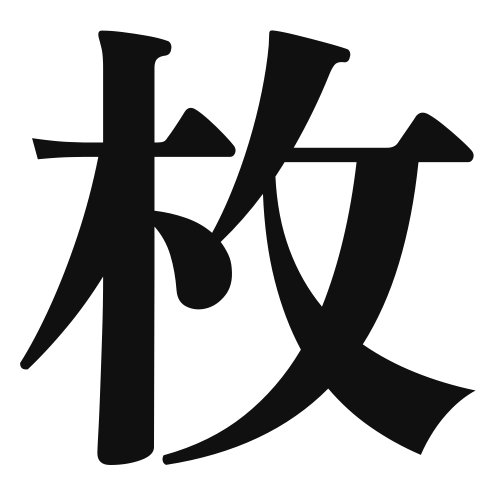1. Overview of Meaning
The kanji “枚” (mai) is a counter used for flat objects such as sheets of paper, plates, or photographs. It is commonly used in counting items that have a flat shape.
2. Origin and Radical
Formation of the Kanji: The kanji “枚” is a phonetic compound character. It combines the radical for “wood” (木) and the phonetic component “mai,” which helps convey its pronunciation.
Radical: The radical of “枚” is “木” (tree), which is often associated with flat, thin objects like sheets of wood or paper.
3. Examples of Usage
Common Words and Phrases:
- 一枚 (いちまい, ichimai) – one sheet
- 二枚 (にまい, nimai) – two sheets
- 枚数 (まいすう, maisuu) – number of sheets
Example Sentences in Daily Conversation:
- この写真は三枚あります。 (このしゃしんはさんまいあります。) – I have three sheets of this photo.
- そのレポートを一枚印刷してください。 (そのレポートをいちまいインサートしてください。) – Please print one sheet of that report.
4. Synonyms and Antonyms
Similar Kanji:
- 冊 (さつ, satsu) – used for books or volumes, which are thicker than flat objects.
- 個 (こ, ko) – a general counter for items, but does not specify shape.
Antonyms:
- 立体 (りったい, rittai) – meaning “three-dimensional,” which contrasts with the flatness implied by “枚.”
5. Cultural and Historical Background
Relation to Japanese Culture: The use of counters like “枚” is an essential part of the Japanese language, reflecting the culture’s attention to detail and specificity in counting objects.
Proverbs and Idioms: While there are no specific proverbs that include “枚,” the concept of counting and measuring is prevalent in Japanese culture, emphasizing the importance of precision.
